Ok, maybe it’s not the ultimate dive watch. Still, the updated Rolex Deepsea Ref 126660 is definitely up there. Or down there, rather, with the greats. Water resistant to an insane 3,900 meters, it has been over-engineered to the max. Now, Rolex had undertaken some subtle updates on its not so subtle sea monster as it continues its quest for mechanical dive watch supremacy. Read on to find out what’s changed.
Sixty-Years In The Making
The Rolex Deepsea Ref 116660 made its larger-than-life debut in 2008. It was, and still is, the biggest steel-sports-watch by Rolex. The case measures 44mm in diameter and is rather hefty on the wrist, being around 18mm thick. It represents the culmination of everything Rolex has learned from over sixty-years of building world-class diving watches. A journey which began with the Rolex Submariner in 1953.
The Submariner was the first divers’ watch waterproof to a depth of 100 metres (330 feet). This offered an early insight into Rolex’s technical capabilities and ambitions. It was the Rolex Sea-Dweller, that would lay the foundation for what would become the Rolex Deepsea.
- The Rolex Sea Dweller Ref. 1665 for professional divers.
The original concept for the Rolex Sea-Dweller was developed in conjunction with COMEX. The French company specialized in engineering and deep diving operations in the 1960s. At the time they needed a diving watch for their professional divers to use whilst working on deep sea oil rigs.
To meet this need Rolex modified regular Submariner watches (ref. 5513) to incorporate a helium escape valve, an invention patented by Rolex in 1967. The result was a specific reference created for COMEX (ref. 5514.) Following on from the success of this project, a new model fitted with helium escape valves – the Sea Dweller Ref. 1665 – came to market in 1967. These were targeted at professional deep-sea divers. The initial model was water resistant to 2,000ft (610 meters), an impressive feat at the time.
Evolution Of The Rolex Sea-Dweller
The Rolex Deepsea represents the ultimate evolution of the Sea-Dweller. At its heart is the innovative Ringlock System. This allows the watch case to withstand water pressure equivalent to a weight of some three tonnes on the crystal. There are three key elements to this system: the central ring, made of nitrogen-alloyed steel, the 5-millimetre domed sapphire crystal, and the grade 5 titanium case back. Water pressure compresses the three elements of the Ringlock System together. This process further reinforces the seal of the case. Hence its ability to go almost 4km under water.
- An exploded case view of the Rolex Deepsea Ref 116660.
Despite its innovative construction, the original model received mixed reviews on its release. Some loved the sheer excessiveness of the Rolex Deepsea. Others complained it was too impractical for daily use. Rolex built its reputation on creating practical, reliable watches you can wear anywhere. It’s understandable then that this was something of a sore point for collectors. Additionally, many felt the width of the bracelet was out of proportion with the case. This caused the watch to sit a little funny on the wrist.
In reality, the Rolex Deepsea was always going to have limited commercial appeal. This was about demonstrating the company’s exceptional expertise. Not selling watches. Although that’s not to say that the Rolex Deepsea hasn’t been a strong seller.
Rolex Deep Sea Sea-Dweller D-Blue Dial
Even with its impressive technical credentials, the Rolex Deep Sea didn’t really get on people’s radar until 2014. That was the year that Rolex debuted the Deep Sea Sea-Dweller D-Blue Dial. It was created in collaboration with acclaimed film director, James Cameron.
Two years earlier, Cameron had solo dived to explore the Mariana Trench. It’s the deepest point of the earth’s ocean (10,908 meters underwater.) Along for the ride was a Rolex prototype known as the Deepsea Challenge. Engineered to withstand depths of up to 12,000 meters, it was attached to the manipulator arm of the Deepsea Challenger submersible. Like Cameron, it emerged from the ordeal unscathed. Naturally, Rolex made a commercially-available watch to celebrate this feat.
- The original Rolex Deepsea Ref 116660 with black dial on the left, and D-Blue dial on the right.
The highlight of this particular model was the gradient blue dial (hence the name, D-Blue). Its intended as a subtle yet striking visual representation of the ocean’s depth. Things start off a lovely blue near the surface where light can reach and slowly descend into pitch blackness as you dive deeper and deeper. Given that Rolex tool watches usually have plain dials, this one was kind of a big deal at the time. That said, many took issue with the decision to make the ‘DEEPSEA’ lettering on the dial a yellowy-green color. It was inspired by the color of the submersible Cameron piloted.
- The Rolex Deepsea Ref 116660 D-Blue Dial.
Regardless of the mixed feedback, these watches were quite sought after for a while. There was even speculation that they would become collectible. It’s not clear whether things have quite panned out that way though.
The Rolex Deepsea Ref 126660
In 2018, Rolex introduced the revised Deepsea Ref 126660. The minor updates suggest that the brand does actually listen to customer feedback. The watch remains largely unchanged from the original but for a few key tweaks. The main one being a thinning of the lugs combined with a slight increase in the width of the bracelet. It’s 22mm now vs 21mm on the original. It doesn’t sound like much, but the difference is noticeable when you compare the two side by side. This change gives the case and bracelet a better sense of proportion. The clasp on the bracelet is also bigger. The result being a fit that is more comfortable than the original.
- The original Rolex Deepsea Ref 116660 on the left vs the new Deepsea Ref 126660 on the right.
Aside from that, all the key specifications remain unchanged. The watch is still 44mm in diameter and water resistant to 3,900 meters. It comes on a Rolex Oyster bracelet with Glidelock adjustment and Fliplock dive extension link. It’s available with your choice of a black or gradient D-blue dial (from the Cameron version above). Both of are framed by a 60-minute graduated Cerachrom insert in black ceramic. The numerals and the graduations are moulded in the ceramic and coloured with platinum using a PVD process.
Outside of the aesthetic changes to the case and bracelet, the other big update is the movement. The Rolex Deepsea houses calibre 3235. This new-generation movement is entirely developed and manufactured by Rolex. It incorporates the Chronergy escapement patented by Rolex and delivers a max power reserve of approximately 70 hours. The movement is also equipped with a Paramagnetic blue Parachrom hairspring. Rolex says this up to 10 times more precise than a traditional hairspring in case of shocks.
As with all Rolex movements, calibre 3235 is COSC-certified as a chronometer. Further internal testing after casing sees it receive the Rolex Superlative Chronometer certification. This guarantees accuracy of -2 to +2 seconds a day.
The Rolex Deepsea is not a watch you’d wear to the office every day. Unless you’re the Hulk (although he already has his own Rolex). It is a serious diving watch for those who appreciate miniature feats of engineering brilliance. Plus, it showcases what Rolex is truly capable of.
The new Rolex Deepsea Ref 126660 retails for GBP 9,050 with a plain black dial and GBP 9,300 with the D-blue dial.
Technical Specifications: Rolex Deepsea Sea-Dweller Ref 126660
- Case: Oyster – 44 mm – Oystersteel – monobloc middle case, screw-down case back and winding crown – Rolex Ringlock System case architecture with Helium escape valve – Unidirectional rotatable 60-minute graduated, scratch-resistant Cerachrom insert in ceramic, numerals and graduations coated in platinum – waterproof to 3,900 metres / 12,800 feet.
- Dial: Black or D-Blue – centre hour, minute and seconds hands – instantaneous date – stop-seconds for precise time setting – Chromalight display with longlasting blue luminescence on hour markers and hands.
- Movement: Calibre 3235 – bidirectional self-winding via Perpetual rotor – paramagnetic blue Parachrom hairspring – Chronergy escapement with optimized energy efficiency – 70-hour power reserve – certified as Superlative Chronometer.
- Price: GBP 9,050 (black dial)/GBP 9,300 (D-Blue dial).
More info at www.rolex.com.
This article by TheWatchLounge has been sponsored by our partner WatchBox.
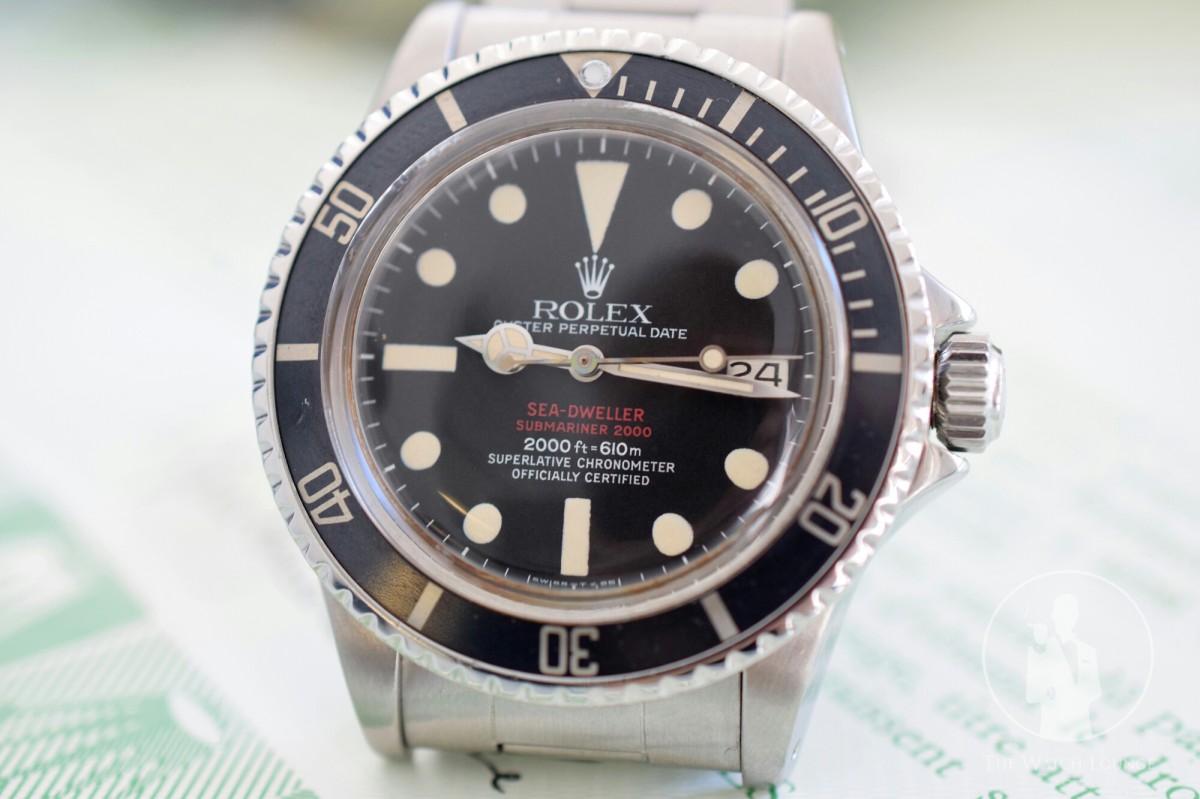
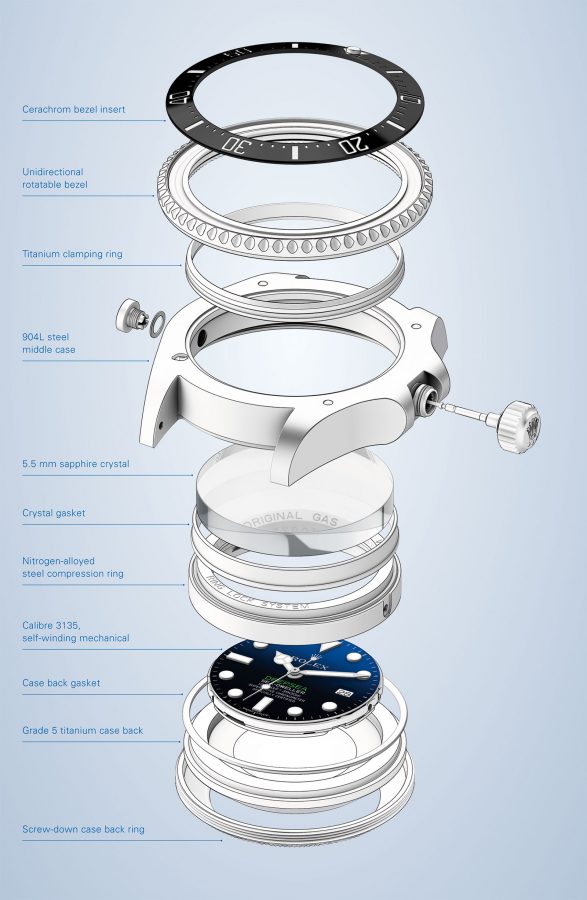
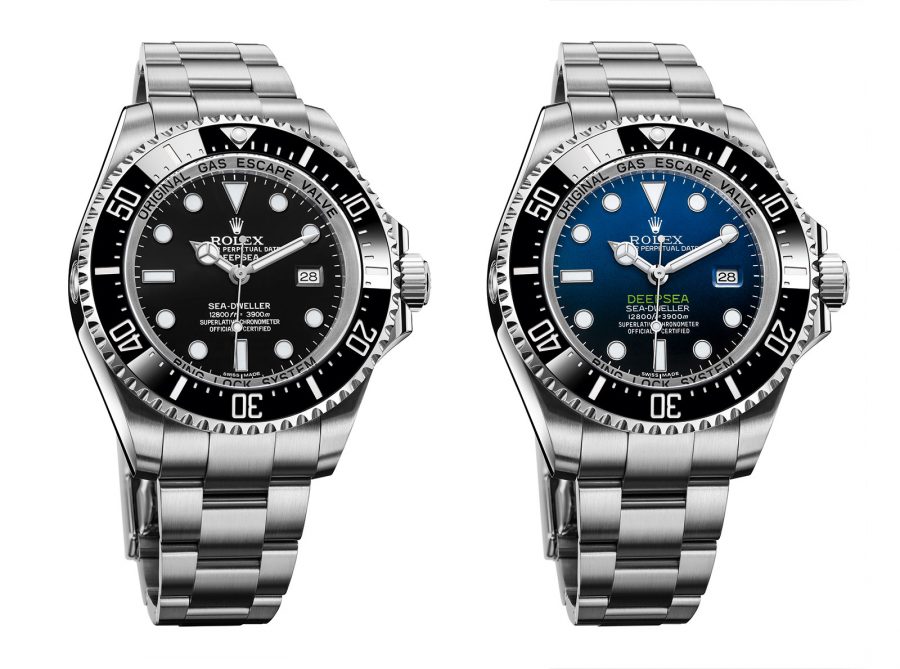
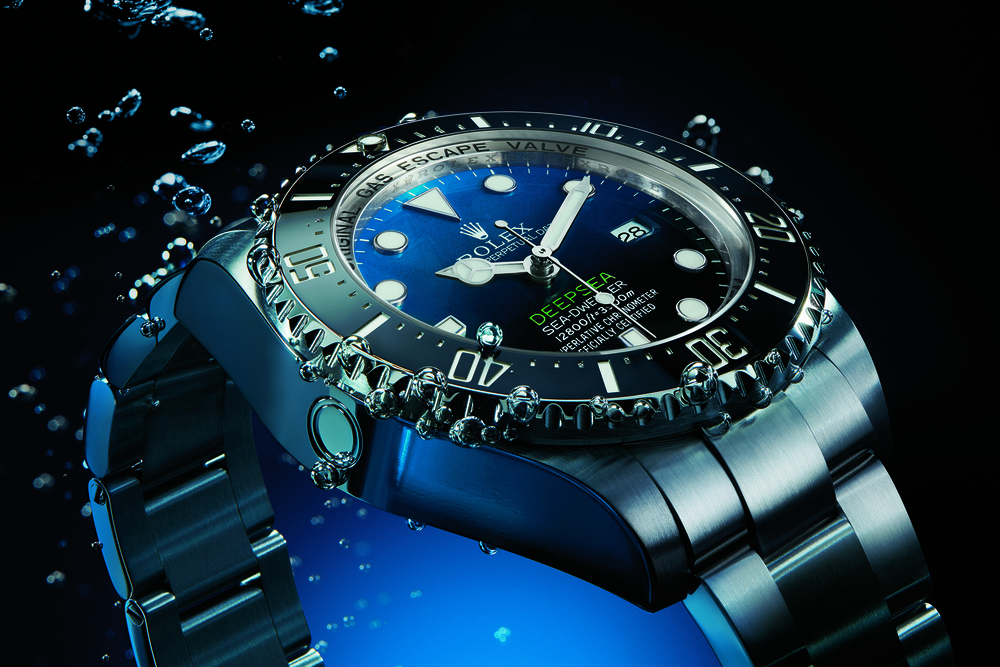
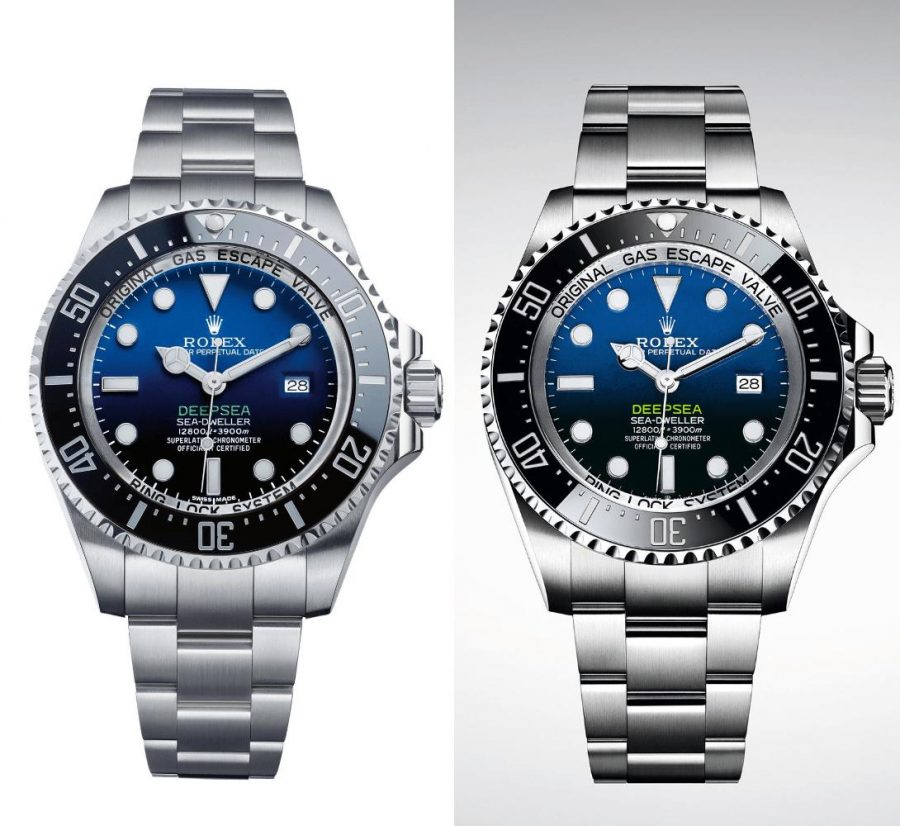
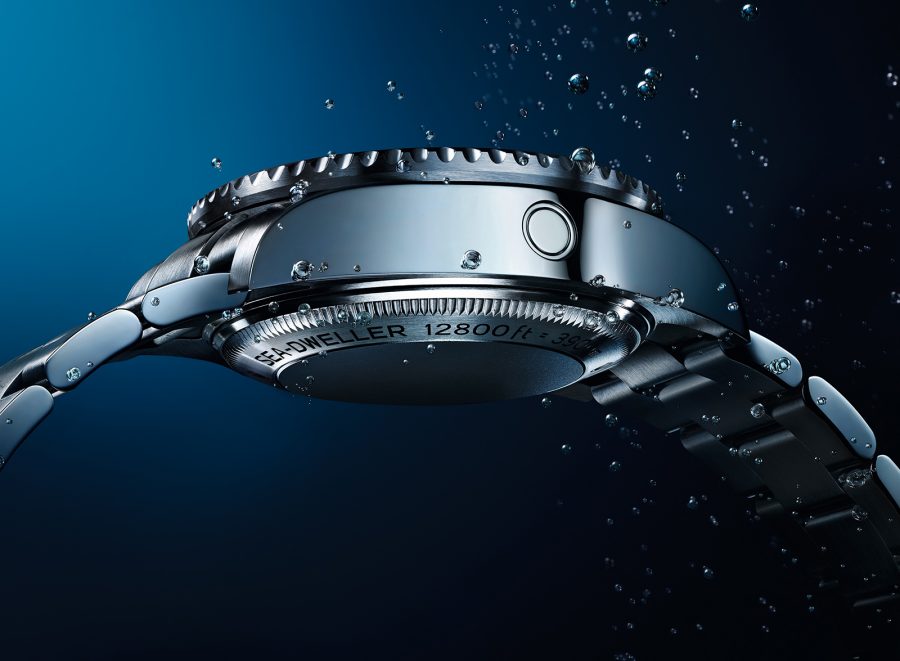
Good article and as you rightly point out the size of the beast is a bit daunting. There is of course a third way, the “Sea Dweller 4000” which in size is closer to the original Sea Dweller and has the helium escape, which as a former Saturation Diver is important to me.
Thank you for a very special factual article about the Rolex Deep Sea. I purchased model 126660 with the James Cameron edition. Truly a magnificent time piece.
Tom is the hologram located at the 6 o’clock on the watch? Where specifically. If you have a picture that would be great. Thank you. psully29@gmail.com.